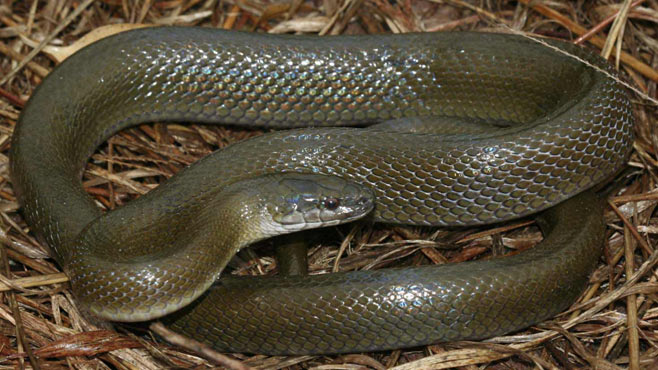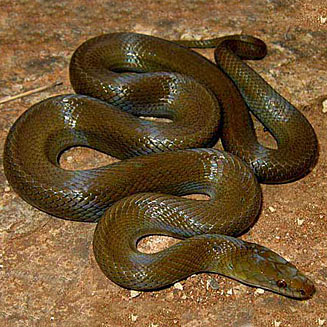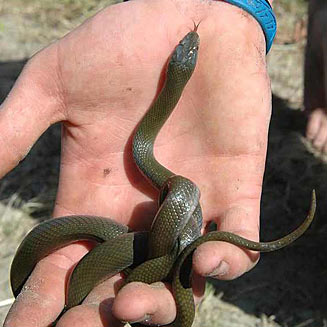|
Lamprophis inornatus (Olive house snake, Black house
snake)
Nagslang, Olyfhuisslang [Afrikaans]
Life >
Eukaryotes
>
Opisthokonta >
Metazoa
(animals) > Bilateria > Deuterostomia >
Chordata >
Craniata > Vertebrata (vertebrates) > Gnathostomata (jawed vertebrates) >
Teleostomi (teleost fish) > Osteichthyes (bony fish) > Class:
Sarcopterygii (lobe-finned fish) > Stegocephalia (terrestrial vertebrates) >
Tetrapoda
(four-legged vertebrates) > Reptiliomorpha > Amniota >
Reptilia (reptiles) >
Romeriida > Diapsida > Lepidosauromorpha > Lepidosauria >
Squamata > Serpentes
(snakes) > Family: Colubridae > Subfamily:
Boodontinae > Genus:
Lamprophis
 |
|
Lamprophis inornatus (Olive house snake, Black house
snake), KwaZulu-Natal. [J.P. Brouard ©, from
SARCA Virtual Museum] |
 |
 |
|
Lamprophis inornatus (Olive house snake, Black house
snake), KwaZulu-Natal. [J.T. Fisher ©, from
SARCA Virtual Museum] |
Lamprophis inornatus (Olive house snake, Black house
snake), Eastern Cape. [Q. Armstrong ©, from
SARCA Virtual Museum] |
Identification
The Olive hose snake is identified by its uniform olive or
grey colouration, its small eyes and its strictly nocturnal lifestyle. It grows
to an average length of 75 cm but may reach up to 1.3 meters in length.
Distribution and habitat
This hose snake species is found in the Western Cape and in
a band between northern KwaZulu-Natal and Limpopo. Its preferred habitat is moist savanna
and lowland forest.
Food
Feeds on lizards,
rodents
(e.g.
rats and mice) and other snakes.
Predators, parasites and disease
Eaten by other snakes and
birds of
prey (particularly
secretary birds and
snake eagles).
Reproduction
Oviparous (egg-laying), lays between 5 and 15 eggs in
summer.
Longevity
Has been known to live for 20 years in
captivity
Medical importance
Non-venomous and not dangerous to man.
Links
References
-
Broadley, D.G. 1983. FitzSimons' Snakes of Southern
Africa. Delta Books, Johannesburg.
-
Marais, J. 2004. A Complete Guide to Snakes of
Southern Africa. Struik Publishing, Cape Town.
|
